While traditional Caesar dressing is made with raw egg yolks, I understand why some people find the concept intimidating. Whisking raw yolks with oil to make the creamy base can be a bit tricky, easily leading to a split or separated dressing. Luckily, there’s an easy workaround– mayonnaise! Adding ingredients like Worcestershire sauce, fresh garlic, and anchovies to a mayo base turns your favorite sandwich spread into a creamy Caesar dressing in minutes.
Whether you’re making a classic Caesar salad, punching up the flavor in a sandwich or wrap, or want something different for dipping homemade potato chips and chicken wings into, this creamy dressing delivers so much flavor. I hope you and your family love it as much as we do!
Key Ingredients
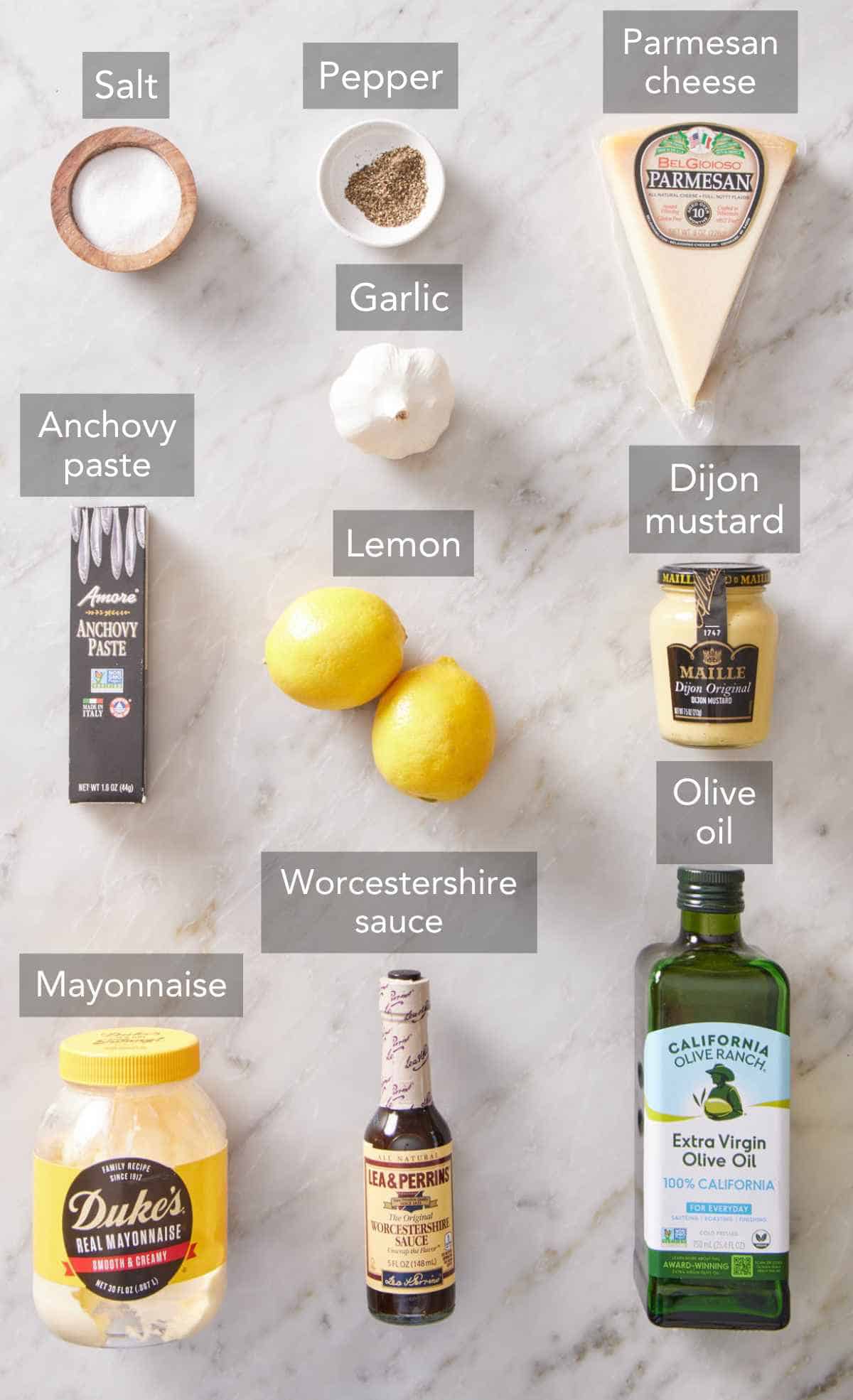
These main ingredients are essential to making the best Caesar Dressing. You can find the full list of ingredients in the recipe card below.
Mayonnaise — feel free to use either a high-quality store-bought brand or swap in homemade mayonnaise. For all my Miracle Whip fans out there, homemade Caesar salad dressing really is best with classic mayo.
Anchovy paste — this umami-boosting ingredient is iconic to Caesar dressing! Since the recipe only needs a small amount, I like to use the extra convenient paste since it comes in a squeezable tube. There’s no mashing required, and you won’t end up opening a full tin of anchovy fillets when you only need a few.
Olive oil — you don’t need anything fancy, though you should use an olive oil you like the taste of. Note that olive oil can vary in flavor from grassy to spicy to buttery to fruity. I like a buttery, mild extra-virgin olive oil, but a regular olive oil or one with a different flavor profile works too!
Parmesan cheese — I always recommend you grate your own cheese—it tastes better, has a better consistency, and is typically cheaper than buying it pre-grated. See below for tips on how to grate fresh Parmesan cheese for this recipe.
Lemon juice — make sure to use fresh lemon juice for the best results. The bottled variety has a bitter undertone that muddies the flavor and doesn’t taste fresh.
Garlic — raw garlic has a pungent, spicy flavor that is essential to Caesar dressing. Grating a fresh clove on a microplane is the best way to extract the most flavor from your clove.
How To Make Caesar Salad Dressing
This easy variation on authentic Caesar dressing skips the hassle of whisking egg yolks together with oil until a thick emulsion is formed. Instead, start with mayo, then whisk in lemon juice, Dijon mustard, Worcestershire sauce, garlic, anchovy paste, and a few seasonings. Stir in salty parmesan cheese at the end and lots of black pepper! This easy recipe makes a thick and creamy salad dressing so fast without any risk of the dressing separating and turning into a thin, oily mess. Instead, you are guaranteed to have a creamy dressing in no time!
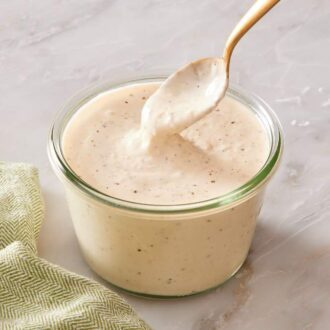
Caesar Dressing Recipe
Equipment
- Bowl
- Whisk
Ingredients
- ⅔ cup mayonnaise (160g)
- 2 to 3 tablespoons lemon juice
- 2 tablespoons olive oil
- 1 clove garlic finely minced or grated
- 1 teaspoon anchovy paste
- ½ teaspoon Dijon mustard
- ½ teaspoon Worcestershire sauce
- ½ teaspoon salt plus more to taste
- ½ teaspoon ground black pepper plus more to taste
- ⅓ cup freshly grated parmesan cheese (20g)
Instructions
- In a medium bowl, combine the mayonnaise, olive oil, 2 tablespoons lemon juice, garlic, anchovy paste, and Worcestershire sauce. Whisk together until smooth.

- Sprinkle in the parmesan cheese, salt, and pepper and stir to combine. Adjust the flavors of the dressing to taste with more lemon juice, salt and pepper, and/or Worcestershire. Cover and refrigerate until ready to use. This makes about 1 cup of dressing.

Notes
- Swap the paste for regular anchovies. You can finely mince 1 or 2 anchovy filets to use instead. The paste is convenient and doesn’t require opening a full tin or jar of anchovies, but both options will make a delicious dressing! Anchovy paste is typically stocked with canned tuna in grocery stores.
- Let the dressing rest. It’s best to make this dressing a few hours in advance of serving to allow the flavor of the garlic and anchovy to develop. Plus, it makes mealtime even easier when the dressing is already prepped! For the best texture, Caesar dressing is best eaten within 24 hours of being made.
Nutrition

Pro Tips For Making This Recipe
Use a larger bowl than you think you’ll need. This helps to avoid sloshing the oil on your countertops as you whisk the salad together.
Make sure the dressing is nice and cold before tossing it with greens. I like to let it rest in the fridge in an airtight container for about an hour to cool off. As a bonus, that resting time helps deepen the flavors!
Vary The Lemon Juice To Suit Your Taste
I personally prefer a punchier, more lemon-forward Caesar dressing, so I use all 3 tablespoons of lemon juice. If you like a creamier, less acidic dressing, start small (just 1 tablespoon) and add more to taste if desired.
Grate The Cheese With A Microplane
Finely grated parmesan is key to getting the texture of the dressing right—it helps to thicken it! If you’ve yet to try using a microplane, I can’t recommend them enough. It’ll turn a wedge of parmesan into a cloud-like pile of cheese that easily melts in your mouth. Simply rub the block of cheese back and forth on the microplane and measure or weigh the grated parmesan cheese.
If you don’t have a microplane, use the smallest holes on a box grater. Using the large hold will produce big, thick strips of parmesan (shredded parmesan) that won’t stir into the dressing at all. You can also chop and then pulse the block of cheese in a food processor until very finely ground, but this will make a slightly grainier dressing.
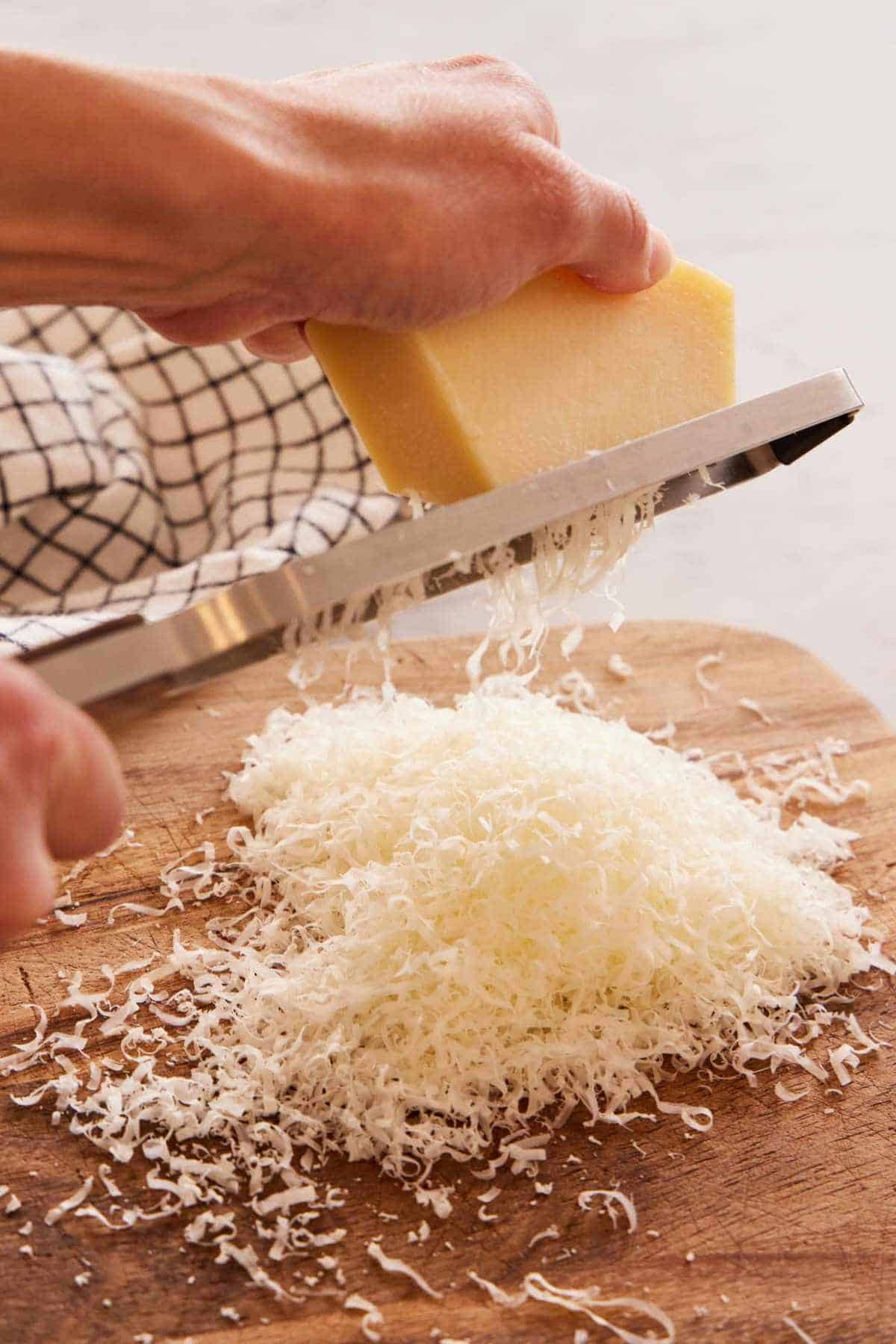
How To Use Caesar Dressing
Obviously, the most classic use for this homemade dressing is Caesar salad—toss it with crisp romaine lettuce and buttery homemade croutons, then top with an extra flourish of parmesan cheese. It’s also a great creamy dressing for other salads and can be used for a crowd-pleasing twist on pasta salad.
I also love swapping out traditional mayo for Caesar dressing when making sandwiches or wraps—that extra bit of spice and tang adds tons of excitement. I also like drizzling a bit of Caesar over veggies like my air fryer broccoli, Brussels sprouts, or roasted potatoes! Or, use it as a dip in place of ranch with air fryer potato wedges, air fryer chicken wings, or a fresh veggie tray.

Frequently Asked Questions
You don’t have to, but remember, you can’t taste “anchovy” in the dressing. It just adds umami! If you don’t eat fish, swap it out with other umami-boosters like miso paste, caper brine, or nutritional yeast for a similar flavor.
I don’t recommend it, as the texture will split when thawed. If you do want to freeze it, put the thawed dressing in a blender on low to medium speed with a little extra mayo or oil to re-emulsify it before serving.
Absolutely! If you’re not going to use olive oil, I recommend using a neutral-flavored alternative like avocado oil or canola oil.
If you’ve tried this Caesar Dressing recipe, then don’t forget to rate it and let me know how you got on in the comments below. I love hearing from you!



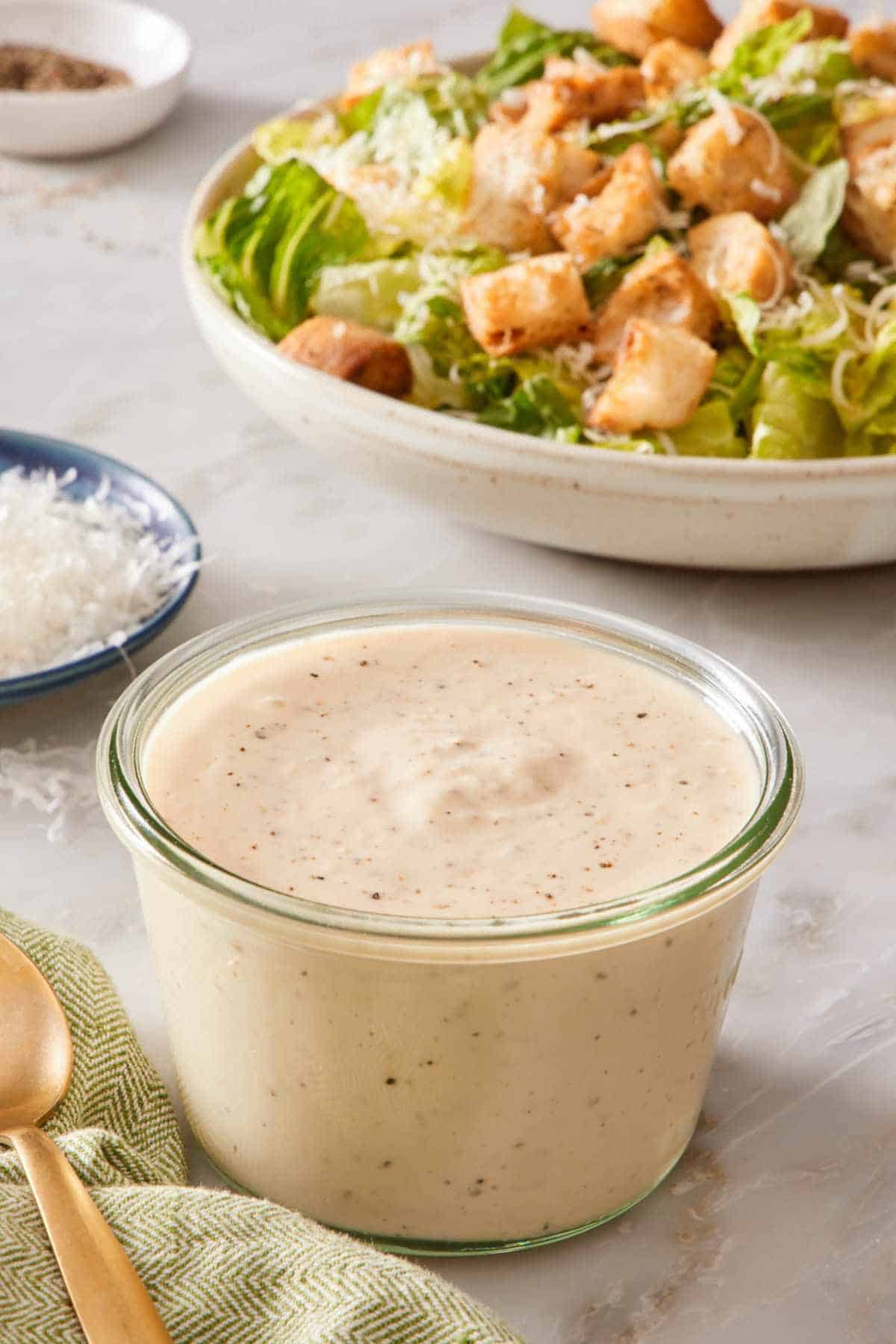





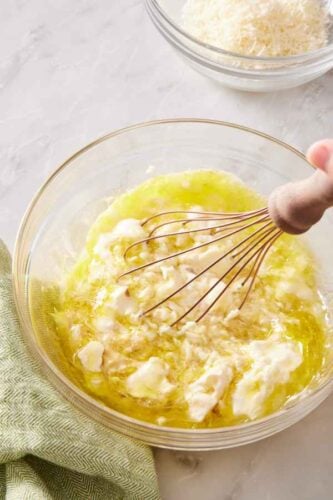
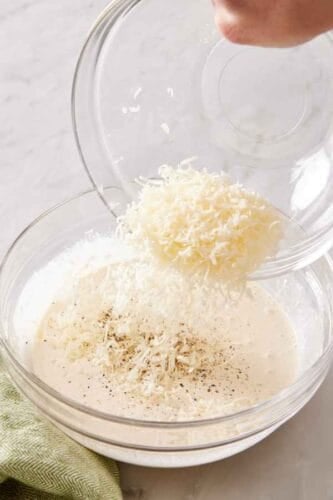
Marie Blackmer says
John is my go to for all of my recipes. He never disappoints.